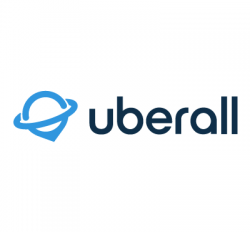5 SEO Tips for More Organic Traffic
Date: August 18, 2022

Organic traffic refers to the people who find and visit your site through a search engine, such as Google. Usually, they are drawn to a page on your website that answers a search query or matches a keyword or phrase they have searched for. The process of making content that is more likely to be found in search is called search engine optimization, or SEO.
The challenge for any business is to make sure that when people look for a product or service, they find you and not a competitor. By working on some of these SEO best practices explained below, you will be able to work on improving your visibility and traffic, and there’s plenty you can do to increase organic traffic.
1. Keep Search Intent Top Of Mind
Search Intent (also known as “User Intent”) is the main goal a user has when typing a query into a search engine. Google wants to rank pages that best fit the search term someone is using, as well as the search intent behind the search query. That’s why it is important to make sure that your post or page fits the search intent of your audience.
In other words, satisfying search intent is ultimately Google’s #1 goal. So if you want to succeed with SEO and content marketing, Search Intent needs to be a big part of your approach. In fact, Google’s most recent edition of their Quality Rater Guidelines stresses the importance and relevance of Search Intent.
The basic rule – if your page doesn’t satisfy Search Intent, it will not rank. In essence, if your page isn’t listed as one of the top results for a search query, it is most likely not being viewed by potential clients.
The key is to think like a potential client or customer. What questions are they asking? What kind of search queries are you interested in ranking for? Writing content that answers these questions is a great starting point.
2. Craft Compelling Title Tags
The truth is, title tags have more potential (and SEO value) than most people realize.
A title tag is the HTML element used to specify the title of a webpage. Its primary job is to tell visitors and search engines what they can expect from the web page (in the shortest and most concise way possible).
It’s essential that a title tag entices the user to click through to your post from the search engine results (or wherever they are). First impressions count: Your title tag is typically the first thing a potential visitor will take notice of when performing a search. So this is your chance to make a positive first impression.
Don’t forget that Google (and other search engines) look at your title tag, amongst other things, to help make sense of your page.
Here are some quick guidelines when writing title tags:
- Focus on descriptiveness: It should accurately describe what the page/post is about and set reader expectations.
- Keep it short and sweet: Your finished title tag should not exceed 50-60 characters.
- Include your keywords: Make sure to include your primary keyword in the title tag. And if possible, add in some of your long-tail variations.
One of the best ways to ensure that your title tags are optimized is to consider the title from the perspective of a search engine user and the mindset of a regular visitor to your site. Think critically and gauge whether your title as it currently appears is sufficiently informative, feels natural to read and is easy to keep track of.
3. Build More Backlinks
Backlinks are one of Google’s top three ranking factors, so it probably comes as no surprise that there’s a clear correlation between a page’s referring domains (linking websites) and its organic search traffic.
Backlinks are links on websites other than your own that go back to a page on your website. Backlinks are also called inbound links because they represent another website’s traffic coming to your own site. The quality and quantity of your backlinks can help you rank higher in search engine results and are a large part of SEO.
4. Boost Important Pages With Internal Links
Internal links are links from one page on your website to another. They help visitors get from page to page. Essentially, an internal link is one that points to another page on the same website.
Internal links are important because they can help Google understand and rank your website better. By giving search engines links to follow, along with descriptive anchor text, you can indicate which pages of your site are important, as well as what they are about. Internal links are also good for user experience and can improve engagement.
5. Refresh Outdated Content
Google loves to see content that is current.
Content that has been more recently published usually gets a higher ranking than outdated pieces, but if you’re only publishing content that is new, your old content is left to go unnoticed in the search results.
Re-publishing old content by breathing new life into it is a simple way to improve your content and your traffic. Skim through old blogs to see if laws have changed, new cases have emerged or if you can give an updated perspective to older information. Once you’ve revived an old blog post, be sure to update the publish date. Then, when Google crawls your website again, it will recognize these pieces as fresh ones, which will cause a boost in search engine traffic for that page.
Not sure where to start? The right SEO Agency can help!
9Sail develops an understanding of your business and the environment you compete in, in order to create a plan of action that is catered to your needs and goals. Interested in learning more? Contact us today!















